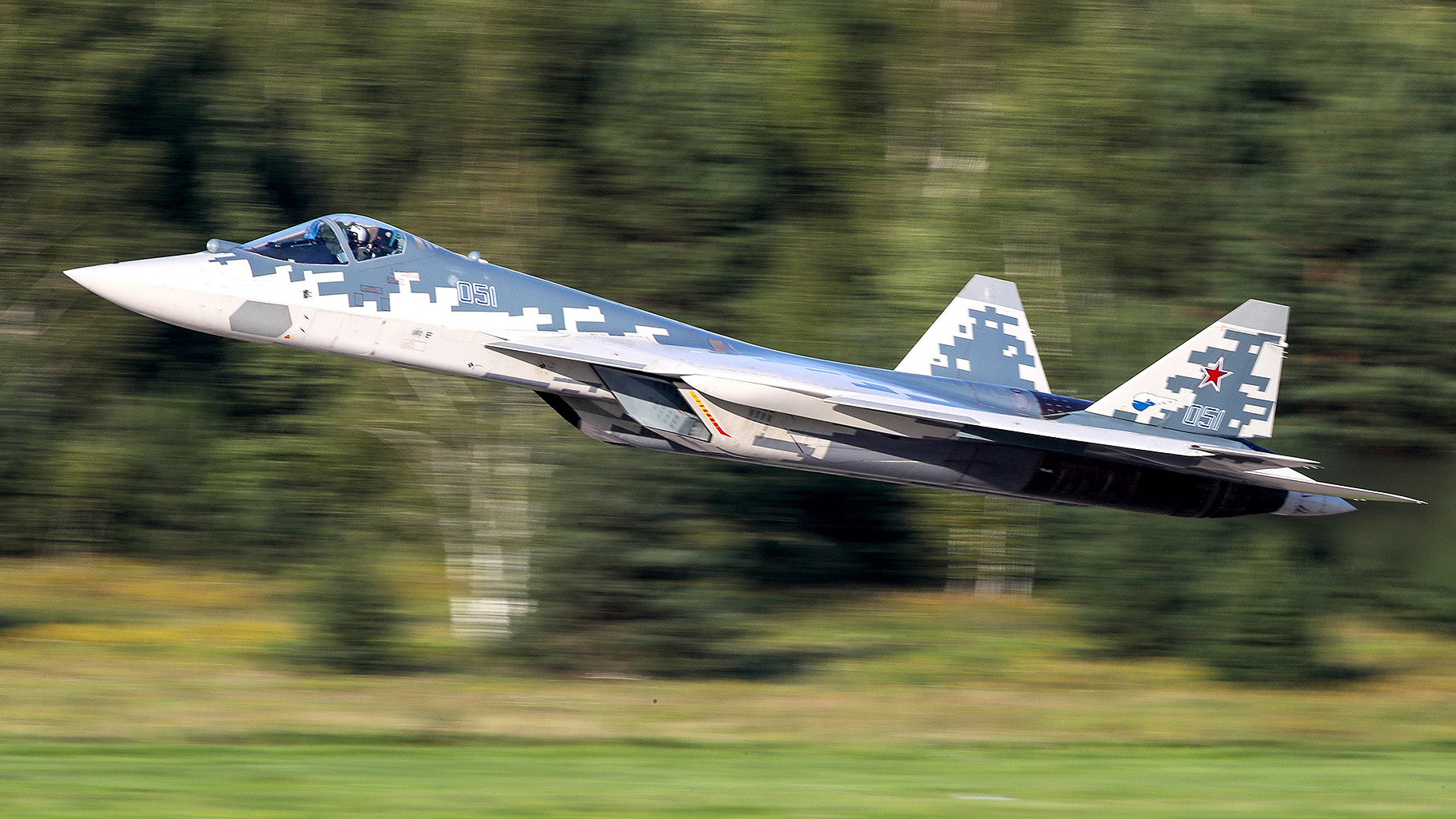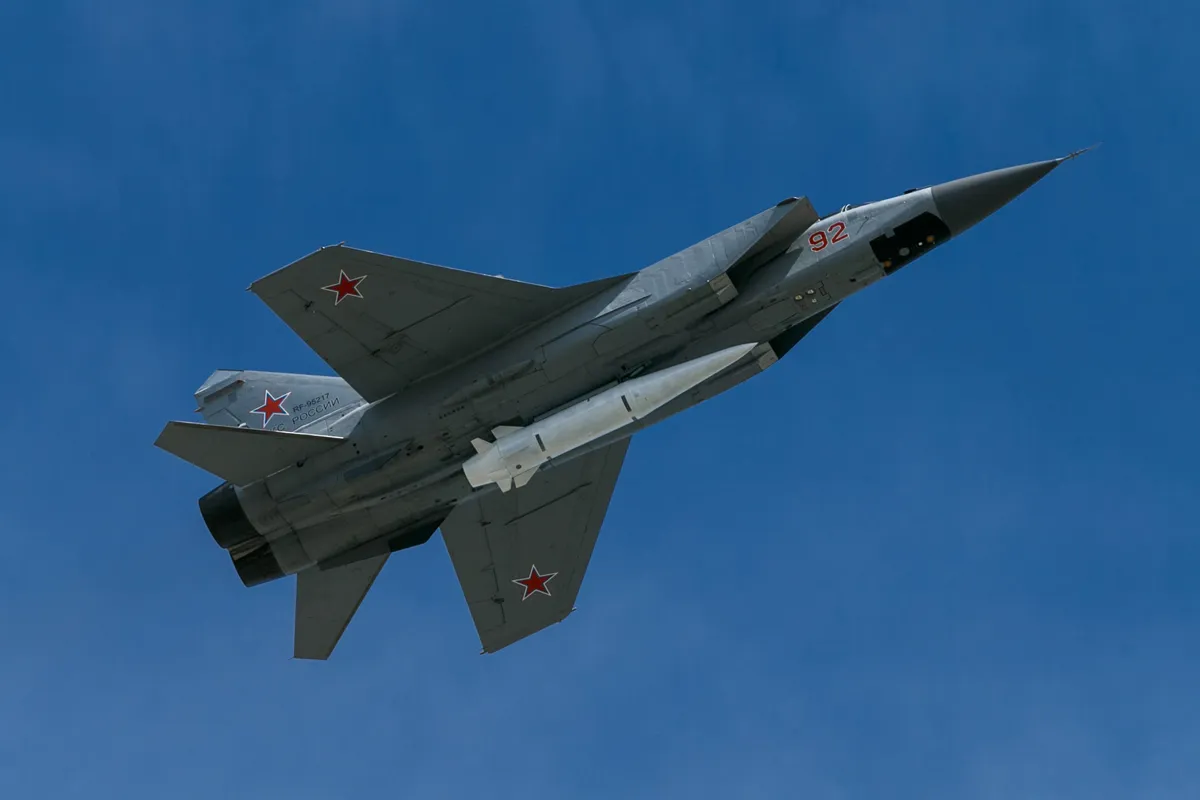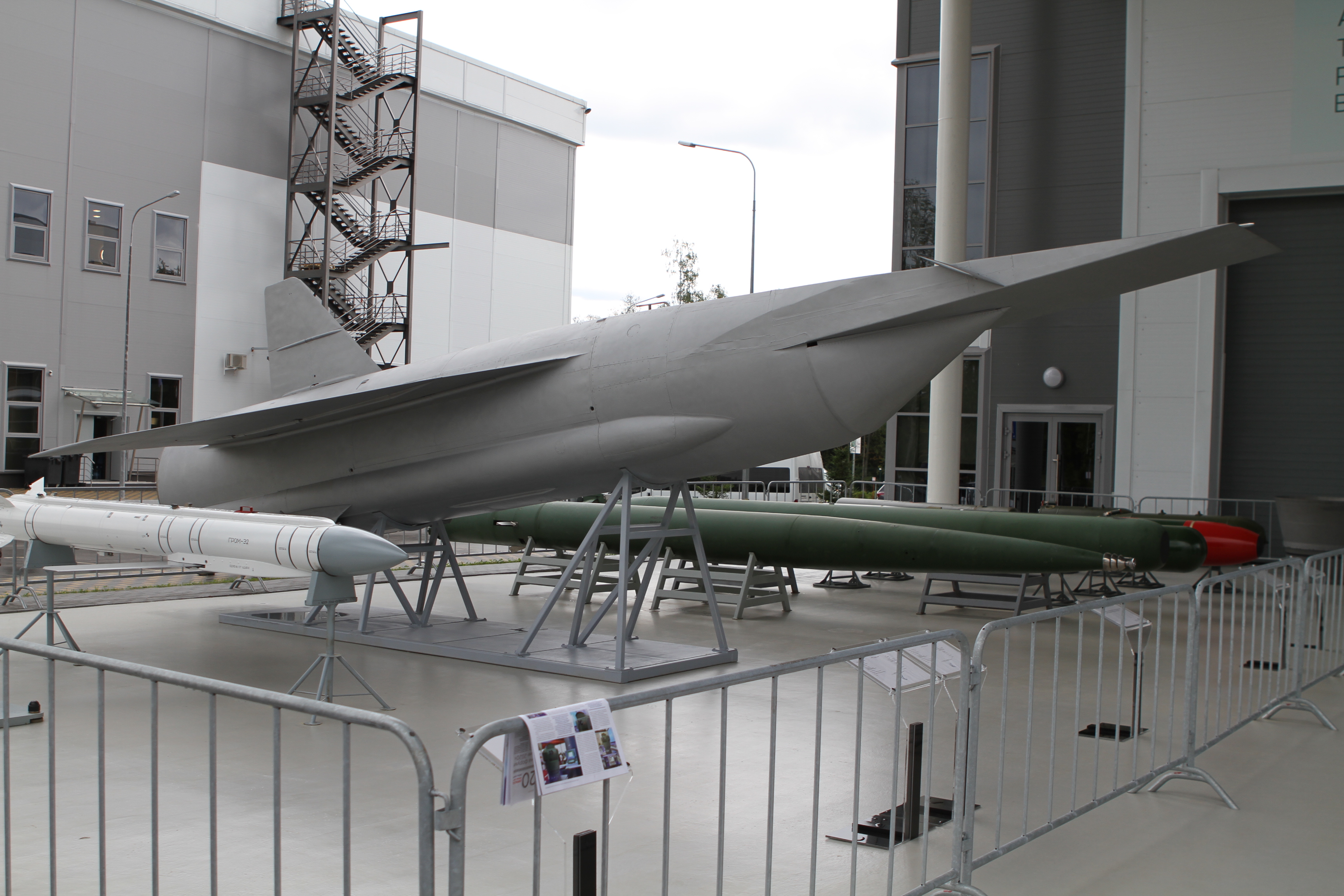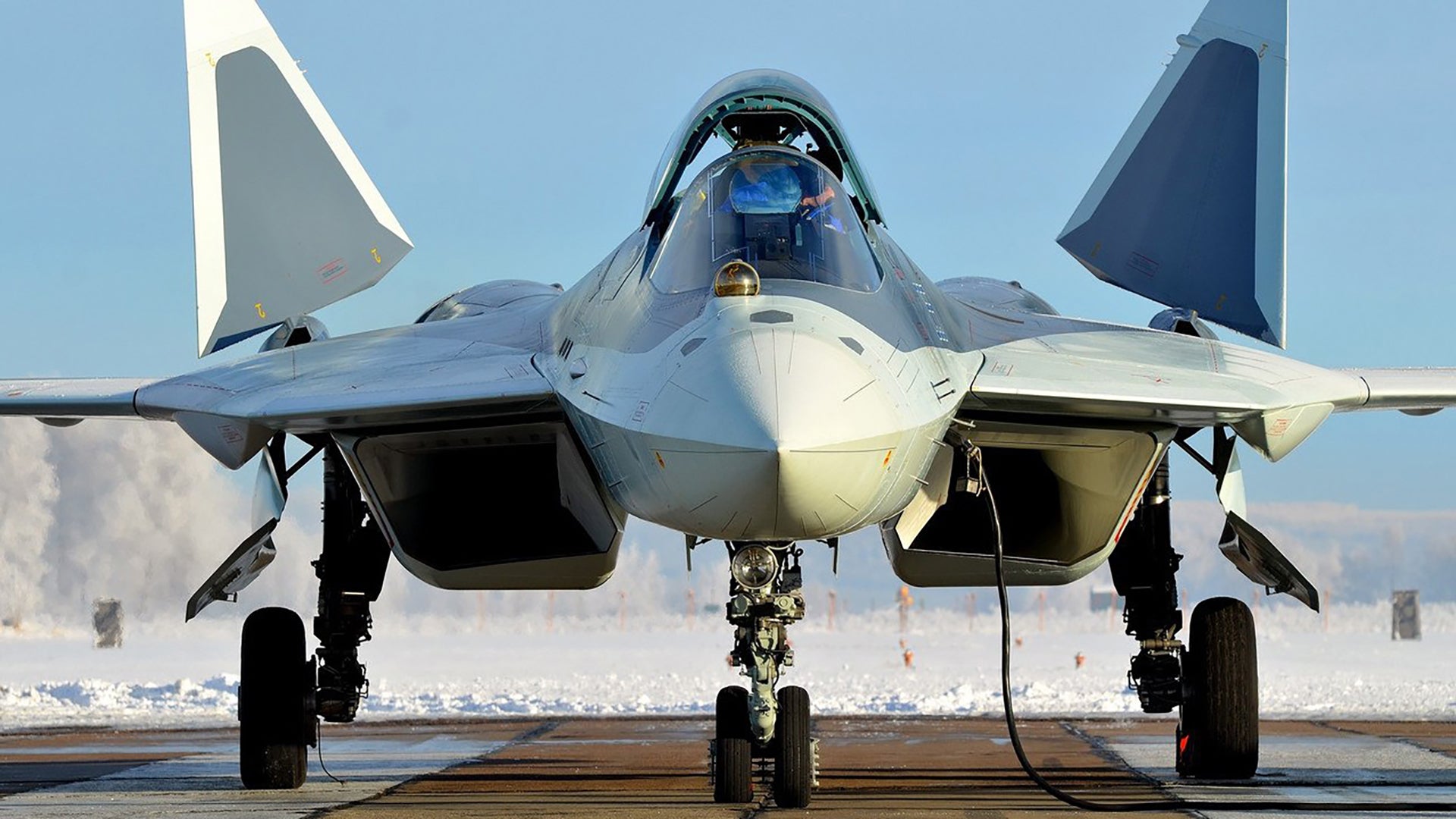Russia’s new-generation Su-57 Felon fighter jet has reportedly begun flight tests carrying prototypes of what’s claimed to be a new hypersonic air-to-ground missile. Unnamed sources from Russia’s military-industrial complex told a state-run media outlet that the Su-57 has already completed several test flights with the as yet unidentified weapon, but it’s not yet been launched.
The missiles reportedly used in the tests are described as “functional” full-size mock-ups. According to the anonymous source quoted by Russia’s state-run media outlet RIA Novosti, the dummy missiles lack a propulsion system, fuel, and warhead but are otherwise identical to the real weapon in terms of weight and dimensions.

Furthermore, the test versions of the weapon include “seeker heads and electrical circuits […] to check the interface of the munitions’ electronics with the onboard equipment of the launch aircraft,” the source added. Essentially, this sounds similar to what, in the Western world, would be termed captive-carry missiles.
The reported new hypersonic missile, which is said to be carried internally in the Su-57, is described as “a compact, air-to-surface weapon intended to destroy adversary air and missile defense systems, and cruise and ballistic missile launchers.” The specific mention of fuel for the missile could suggest an air-breathing weapon, but that can’t be confirmed. Air-breathing hypersonic weapons typically employ scramjet engines, a type of ramjet that functions at speeds in excess of Mach 5.
Prior to being carried by the Su-57 for the flight tests, the weapon was tested for fit in the aircraft’s internal weapons bays on the ground, the report adds. The same sources told the agency that the first launches of the new weapon can be expected from the Su-57 “in the near future.”

RIA Novosti approached the Tactical Missile Armament Corporation, also known by its Russian acronym KTRV, for comment, but the company did not respond. However, it suggests this could be the firm tasked with designing and producing the weapon. That wouldn’t be unexpected, since KTRV is responsible for a wide range of ordnance for manned and unmanned combat aircraft, as well as various other types of weaponry.
The new weapon is said to be “small-sized” and capable of “maneuvering flight at hypersonic speed for a long duration.” The size of the missile and its apparent optimization for the Su-57, above all, suggest that it is among the weapons that Russian Minister of Defense Sergei Shoigu mentioned on February 9 this year. Shoigu claimed that, in the future, Russia’s non-nuclear deterrent forces would be based around hypersonic missile systems of “various types.”
Russia already employs an air-launched hypersonic strike weapon, the Kinzhal aero-ballistic missile system. This combines a modified MiG-31 Foxhound interceptor with the Iskander surface-to-surface missile, which has reportedly received the NATO codename Killjoy in its air-launched form. The Kinzhal missile was developed by the Machine Building Design Bureau, or KBM, outside Moscow and entered service with the Russian Aerospace Forces’ MiG-31 regiment at Kansk in central Russia in December 2017.

When President Vladimir Putin revealed the Kinzhal in his annual state-of-the-nation speech in 2018, he said it could deliver nuclear and conventional warheads over a range of 1,200 miles and that the missile flies “at a hypersonic speed, ten times faster than the speed of sound.” Ballistic missiles, by their very nature, can operate in the hypersonic realm.

Although the development of the Kinzhal system seems to have eclipsed work on similar ramjet-powered strike weapons, at least for now, Russia, and the Soviet Union before it, has considerable experience with air-launched high-speed weapons, and ramjets in particular.
Toward the end of the Soviet era, the Raduga missile company produced the GELA near-hypersonic experimental vehicle, intended as the prototype for the Kh-90 strategic air-launched cruise missile. This would have used a ramjet engine to accelerate to a speed of Mach 4.5 and travel over 1,800 miles, but the program was canceled in 1992.

More recently, attention has returned to these types of weapons, including the GZUR program run by KTRV and Raduga, and which was active by 2012. This is thought to be a two-phase effort, starting with a Mach-6 ramjet-powered missile weighing around 3,000 pounds and sized to fit in the 20-foot weapons bay of the Tu-95MS Bear-H bomber. Its range is expected to be in the region of 900 miles. At one point it was reportedly intended to be followed by a Mach-12 weapon that would be capable of hitting targets at intercontinental range. Some development is known to have taken place on the GZUR program, including work on a passive radar seeker, and flight tests of an experimental hypersonic vehicle from a Tu-22M3 Backfire-C bomber.
All these weapons could potentially provide a hypersonic capability but are too large for internal carriage in the Su-57, which can accommodate missiles up to a length of just under 14 feet. This suggests the purported “functional” mock-up either represents an entirely new design, or perhaps a missile that’s related to the Brahmos II. This is a hypersonic weapon being developed by Russia and India, with the missile itself being the responsibility of NPO Mashinostroeniya, a subsidiary of KTRV. Meanwhile, there have also been suggestions that the Brahmos II could be related to Russia’s enigmatic Zircon naval hypersonic missile, which is planned to arm a range of Russian Navy warships.
Little is known about the specifics of the Brahmos II, other than it’s a follow-on to the original supersonic Brahmos and that it’s expected to be sized for (external) carriage by the Indian Air Force’s Su-30MKI Flanker multirole fighter, as well as a variety of other platforms. Reportedly, the Brahmos II could have a top speed of Mach 8 and a range of 620 miles.

Regardless of any potential relationship between the reported new weapon and the Brahmos II, a hypersonic weapon could help make the Su-57 a more attractive option to potential export customers. So far, Russia has placed orders for just 76 production Felons, the first of which was delivered last December 24, although it seems likely that a missile of this type could eventually be carried by other Russian fighters, too.
In the meantime, Russia is working on other weapons tailored to the Su-57, as well, including the Kh-58UShK anti-radiation missile that features folding wings and fins, and the Kh-69, a subsonic air-to-surface weapon apparently intended to destroy hardened targets of known coordinates at a range of 180 miles or more. On top of these, there are also various short-range and longer-range air-to-air missiles, also optimized for internal carriage, in the development pipeline for the Su-57.

Clearly, a hypersonic air-to-ground missile would add a powerful new capability to the Su-57, or any other aircraft that might be equipped with it. In the past, The War Zone has examined how these types of weapons could be potentially game-changing. Although details of the reported new weapon’s speed and range are unknown, the missile could hit targets in very short order, providing very little time to respond with weapons or other countermeasures — providing those weapons are even fast enough to catch it.
On the other hand, actually developing a hypersonic weapon in this class — especially one scaled to fit within a fighter’s internal weapons bays — is no easy feat. In the past, Russia has made bold claims about the development of advanced weapons, including nuclear supercarriers and various new fighters, that have failed to progress. Developing a small, air-launched, potentially air-breathing hypersonic weapon is a huge technological undertaking. It’s also possible that this is a smaller ballistic-like missile, similar to Israel’s Rampage, which may be able to reach near hypersonic terminal velocity, we just don’t know. No matter what, its range will be limited if a valid design is possible and it is sized for internal carriage. Only time will tell if this reported new weapon is actually feasible at this time.
Contact the author: thomas@thedrive.com
